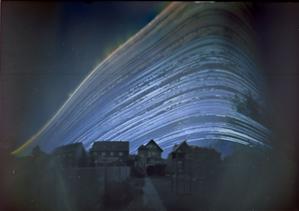Glossary term: 昼夜平分点
Description: 昼夜平分点(春分和秋分)是太阳在其年度黄道运行中穿越天球赤道的时刻。该词源自拉丁语“aequinoctium”,其中“aequus”意为“相等”,“nox”(属格形式为“noctis”)意为“夜晚”。在昼夜平分点这一天,不仅仅是接近赤道的区域,全球的昼夜长度大致相等。对于地球上的观察者,太阳在这一天从正东方升起,沿着天球赤道的路径运行,最后在正西方落下。每年有两次昼夜平分点,春分大约在3月20日,秋分在9月23日。在3月的春分,太阳看起来开始向北半球移动;而在9月的秋分,太阳看起来则向南半球移动。
Related Terms:
See this term in other languages
Term and definition status: The original definition of this term in English have been approved by a research astronomer and a teacher The translation of this term and its definition is still awaiting approval
The OAE Multilingual Glossary is a project of the IAU Office of Astronomy for Education (OAE) in collaboration with the IAU Office of Astronomy Outreach (OAO). The terms and definitions were chosen, written and reviewed by a collective effort from the OAE, the OAE Centers and Nodes, the OAE National Astronomy Education Coordinators (NAECs) and other volunteers. You can find a full list of credits here. All glossary terms and their definitions are released under a Creative Commons CC BY-4.0 license and should be credited to "IAU OAE".
If you notice a factual or translation error in this glossary term or definition then please get in touch.
Related Media
每月日落的地方
Credit: John Paul Pile/IAU OAE (CC BY 4.0)
License: CC-BY-4.0 Creative Commons 署名 4.0 国际 (CC BY 4.0) icons
太阳的轨迹
Credit: Frank Niessen/IAU OAE (CC BY 4.0)
License: CC-BY-4.0 Creative Commons 署名 4.0 国际 (CC BY 4.0) icons
日至和日分
Credit: 通奇·特泽尔/国际天文学联合会教育办公室 (CC BY 4.0)
License: CC-BY-4.0 Creative Commons 署名 4.0 国际 (CC BY 4.0) icons
西落幅度
Credit: Marcella Giulia Pace/IAU OAE (CC BY 4.0)
License: CC-BY-4.0 Creative Commons 署名 4.0 国际 (CC BY 4.0) icons
Related Diagrams
双鱼座星图
Credit: 国际天文学联合会天文教育办公室(IAU OAE)根据国际天文学联合会和《天空与望远镜》的原文改编
License: CC-BY-4.0 Creative Commons 署名 4.0 国际 (CC BY 4.0) icons













